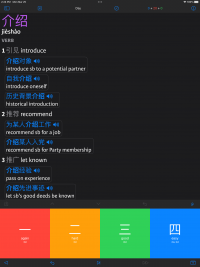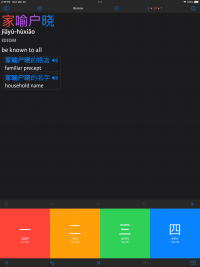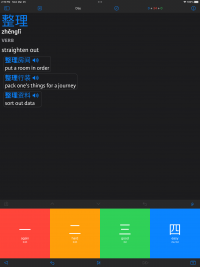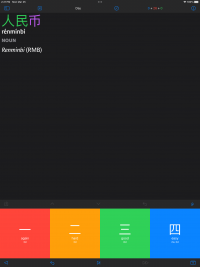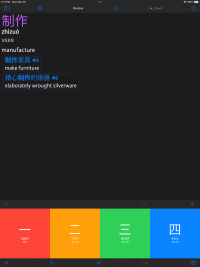Hello,
I’ve been using the Pleco SM2 profile (Anki emulation profile) for over two weeks now, and have been comparing it to my Anki deck.
I noticed some differences and am not sure why the Pleco deck is behaving the way it is.
1) The Anki Settings I am using worked very well for me (I found them at Refold.la Basic Anki Setup). I decided to migrate these settings over to Pleco. Even though some settings didn’t share the same names, I assumed (and I may be wrong) that settings like “Interval Modifier” (Anki) and “Interval Scale” (Pleco) were the same. I have taken a screenshot of my settings so you can compare.
Interestingly, when I would start a test, the new cards in Anki would go from <10 min to 24 hr, then 3 days, then 8 days, etc; whereas the Pleco deck would go from <10 min straight to 2 days and 16 hrs (most values varied around this number), and then 4d (n) hrs, and so forth. It would only go to 24 hr if “Interval Scale” was set to 100%.
Seeing that the intervals didn’t match my Anki deck, I added “steps” of 24 hr, 3d, 8d to Pleco so it would be similar to Anki. This seems to have worked okay, although sometimes I see odd numbers like 3d 5hr (or similar). I am wondering why Pleco’s algorithm is not the same as Anki right off the bat (with the same setting values). FYI, I only use the “good” and “again” buttons.
2) In Anki, no matter when it is that you will see a card again (let’s say 27d), if you hit “again” it shows the card will be seen in <10 min. With Pleco, most “again” buttons show <60 sec (new cards) or <10min, but some show numbers greater than that. If the card shows >3d until next review, it is likely the again button will show a number greater or equal to 24hr, not <60 sec or <10min like it should. I adjusted the Lapse relearning steps, and the Lookshead values, but the problem remains.
3) Lastly, the card Lookahead hasn’t been working very well for me. Sometimes it simply removes the card for the day, even if “again” is pressed, or shows the same card immediately after “again” is pressed, and subsequently removes the card for the day. This defeats the purpose of trying to review that card over and over in the same session until I can hit “good” twice in a row, like I would always do in Anki.
If I don’t use lookahead, I might end the test, but some cards will not have gotten past the “learning” phase because I finished the test before the 10 minutes in which a learning card would appear again.
Furthermore, the next day, I will have 20+ cards sitting in the ‘learning’ stage, whereas with Anki you only have new cards and review cards - cards are added to the ‘learning’ pool only if you hit ‘again’.
Not sure if this is the default Pleco behavior, if these are bugs and other users are experiencing this, or if it's just me and I’m using the settings wrong.
Please let me know if you need any clarifications.
Thank you, and any help would be greatly appreciated!
Caleb
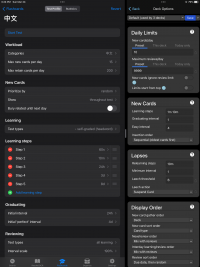
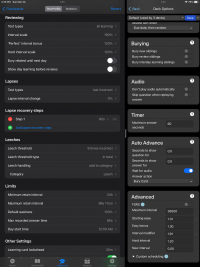
I’ve been using the Pleco SM2 profile (Anki emulation profile) for over two weeks now, and have been comparing it to my Anki deck.
I noticed some differences and am not sure why the Pleco deck is behaving the way it is.
1) The Anki Settings I am using worked very well for me (I found them at Refold.la Basic Anki Setup). I decided to migrate these settings over to Pleco. Even though some settings didn’t share the same names, I assumed (and I may be wrong) that settings like “Interval Modifier” (Anki) and “Interval Scale” (Pleco) were the same. I have taken a screenshot of my settings so you can compare.
Interestingly, when I would start a test, the new cards in Anki would go from <10 min to 24 hr, then 3 days, then 8 days, etc; whereas the Pleco deck would go from <10 min straight to 2 days and 16 hrs (most values varied around this number), and then 4d (n) hrs, and so forth. It would only go to 24 hr if “Interval Scale” was set to 100%.
Seeing that the intervals didn’t match my Anki deck, I added “steps” of 24 hr, 3d, 8d to Pleco so it would be similar to Anki. This seems to have worked okay, although sometimes I see odd numbers like 3d 5hr (or similar). I am wondering why Pleco’s algorithm is not the same as Anki right off the bat (with the same setting values). FYI, I only use the “good” and “again” buttons.
2) In Anki, no matter when it is that you will see a card again (let’s say 27d), if you hit “again” it shows the card will be seen in <10 min. With Pleco, most “again” buttons show <60 sec (new cards) or <10min, but some show numbers greater than that. If the card shows >3d until next review, it is likely the again button will show a number greater or equal to 24hr, not <60 sec or <10min like it should. I adjusted the Lapse relearning steps, and the Lookshead values, but the problem remains.
3) Lastly, the card Lookahead hasn’t been working very well for me. Sometimes it simply removes the card for the day, even if “again” is pressed, or shows the same card immediately after “again” is pressed, and subsequently removes the card for the day. This defeats the purpose of trying to review that card over and over in the same session until I can hit “good” twice in a row, like I would always do in Anki.
If I don’t use lookahead, I might end the test, but some cards will not have gotten past the “learning” phase because I finished the test before the 10 minutes in which a learning card would appear again.
Furthermore, the next day, I will have 20+ cards sitting in the ‘learning’ stage, whereas with Anki you only have new cards and review cards - cards are added to the ‘learning’ pool only if you hit ‘again’.
Not sure if this is the default Pleco behavior, if these are bugs and other users are experiencing this, or if it's just me and I’m using the settings wrong.
Please let me know if you need any clarifications.
Thank you, and any help would be greatly appreciated!
Caleb



